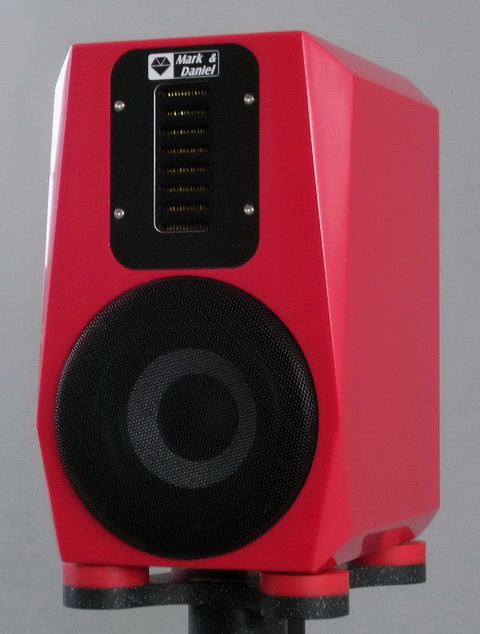Q: What is the QMA design on M&D′s new SX woofers?
A: As a well-known fact, one of the primary leading features to M&D speakers is our patented SX (Super Xmax) technology that creates the stunning, deep bass performance over the other conventional woofers.
As expected, as well as proven, the linear excursion of a woofer should be as high as possible for superior deep bass performance. Although our SX woofers have already achieved a linear excursion that doubles, or even triples that of most conventional design, M&D do not stop here. However, we have encountered many technical challenges when we try to further extend the linear excursion. It has more to do with just investing more money on the precious magnets; much too strong total flux created by too large a group of NdFeB magnets will inevitably saturate the magnetic loop and thereby adversely restrict the Xmax (maximum linearity) excursion to our disadvantage.
The QMA (Quantified Magnets Alignment) is a unique technique developed by M&D then, allowing the Xmax excursion to be further effectively extended.
Due to the statistical conclusion on the piston actions (cone movements) to a bass driver:
- Music lovers habitually play music under a certain sound level. Some play music for background purpose, some turn volume up loud. During full operation of speakers, not many recordings would have that kind of strong deep bass contents to satisfy the drivers, seldom pushing the cone movements of SX woofer to its Xmax limitation.
Although how large the Xmax figure is required to exert "enough" bass from a woofer really depends on different people and occasions. However, linear moving distance of a woofer’s cone is governed by the dynamic range of the recording; and there is only a small chance that a SX woofer’s excursion range would be fully utilized, let alone exceeded.
- On the other hand, Xmax distance is always essential to a woofer in order to create the stunning bass reproduction and truthfully respond to high dynamics of music under high SPL output. The Xmax figure is therefore, the single most important evaluator to judge a woofer’s true value!

Take M&D’s new 5.5” woofer on Maximus-Diamond+ speaker for instance: This SX5.5q-1.0 driver has an amazing ±12.5 mm (1”) Xmax figure over the original ±10mm SX5.5-0.8 woofer that is used on Ruby/Sapphire. A gain of 25% excursion range with the QMA design!
This new 5.5” SX driver with QMA design, has a “comfort zone” of ±7.5mm dynamic range under the full piston strength control (in total linearity) to provide distortion-free playback during audition. This ±7.5mm excursion is capable of satisfying probably over 95% of music reproduction demands, and creating a 102.5dB SPL output at 50Hz, which is very loud for a single driver and far exceeds the capacity of most of conventional, high quality 5” to 6” woofers (normally no greater than ±5.0mm in Xmax).
Occasionally, under very high volume playback with exceptionally deep bass, the woofer’s piston swing may be required to travel beyond the ±7.5mm points, until reaching the two extreme points at ±12.5mm, (which is enough to pump a stunning 107dB SPL output at 50Hz). To achieve a natural roll-off, the piston moving strength has been gradually diminished from 100% to about 80% strength with M&D′s QMA design.
Theoretically, a minor distortion (no greater than 3 to 5%) may be induced while the cone movement is traveling in between the ±7.5mm to ±12.5mm range during the loud, deep bass reproduction. In real practice however, this minor distortion may be negligible since human ears are very insensitive to the “quality” or the “actual contents” of loud, deep bass at this magnitude.
This phenomenon is not too dissimilar to a vacuum tube amplifier working in the vicinity of its maximum power output region: Less unpleasant listening experience is usually resulted, due to vacuum tube’s natural roll-off gain masking its distortion content (mainly on harmonic distortions) , comparing to transistor amplifier’s more noticeable sharp cut-off characteristic over the same region. [ BACK ]
|
